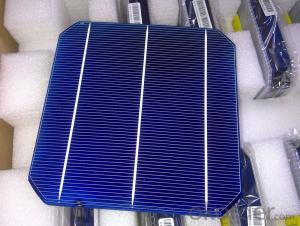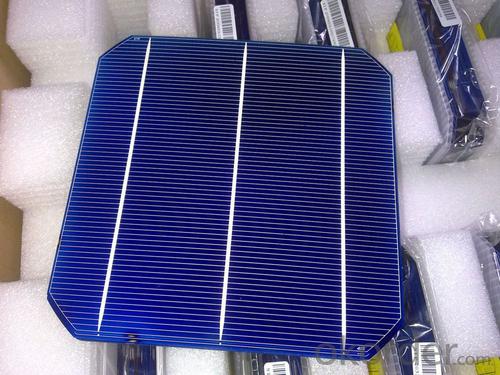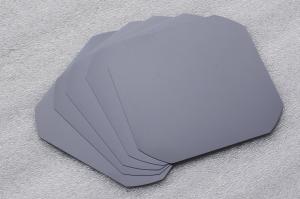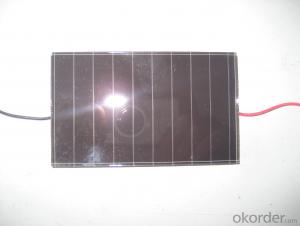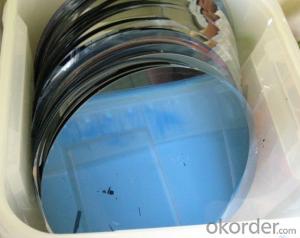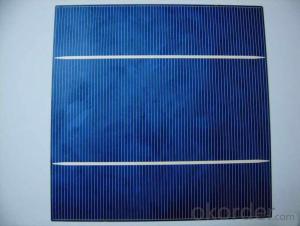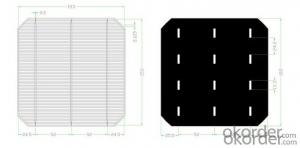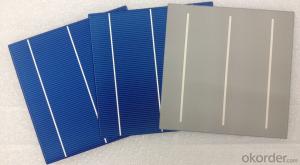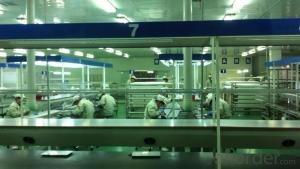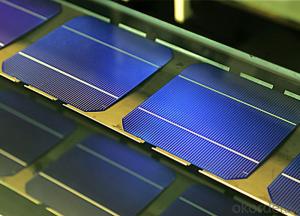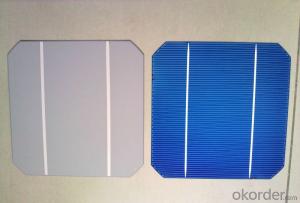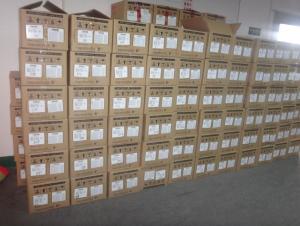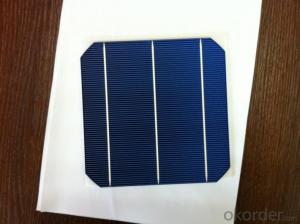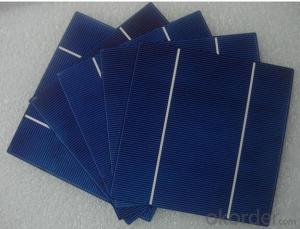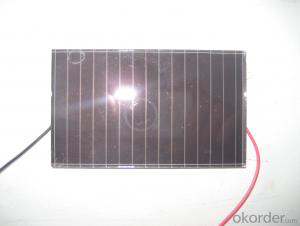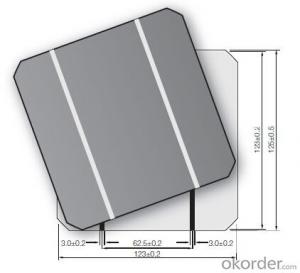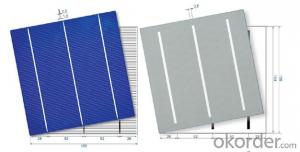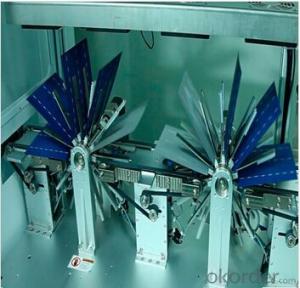Solar Grade Silicon Wafer - Mono Solar Cells 156mm*156mm in Bulk Quantity Low Price Stock 19.4
- Loading Port:
- Shanghai
- Payment Terms:
- TT OR LC
- Min Order Qty:
- 1000 pc
- Supply Capability:
- 100000 pc/month
OKorder Service Pledge
OKorder Financial Service
You Might Also Like
Brief Introduction
- Up to 20.0% efficiency, one of the highest performing mono crystalline cells on the market
- Three bus bars boosts current collection over the entire cell area, leading to higher fill factors
- Blue anti-reflecting coating allows more sunlight be captured and converted to electricity
- Finer, closer fingers improves charge collections for improved energy yield
- Lower light-induced degradation leads to greater power output over the entire module lifetime
- All solar cells are tightly classified to optimize output of module
- Maximum yield and longevity due to hotspot prevention
- Premium appearance results in a highly uniform and aesthetically appealing module
Specification
- Product Mono-crystalline silicon solar cell
- Dimension 156 mm x 156 mm ± 0.5 mm
- Thickness 200 μm ± 30 μm
- Front 1.5 ± 0.1 mm busbar (silver)
- Silicon nitride antireflection coating
- Back 3.0 mm continuous soldering pads (silver)
- Back surface field (aluminum)
Electric performance parameters

- Testing conditions: 1000 W/m2, AM 1.5, 25 °C, Tolerance: Efficiency ± 0.2% abs., Pmpp ±1.5% rel.
- Imin : at 0.5 V
Light Intensity Dependence
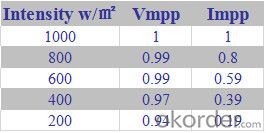
Soldering Ability
- Peel Strength: > 1.0 N/mm (Pull soldered ribbon from busbar in 5 mm/s of 180°)
Dimension Figure
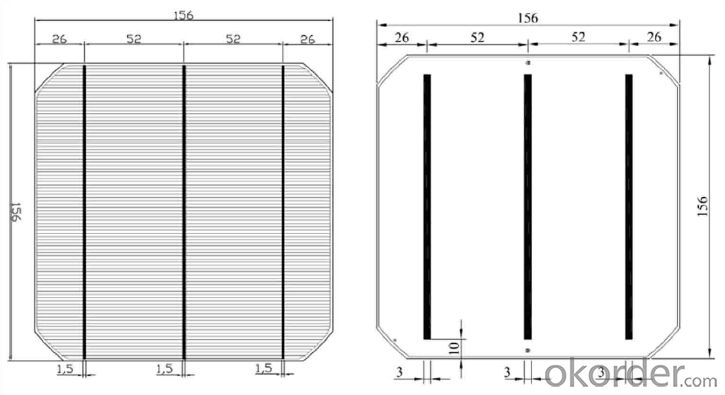
Quick Response
- Any time and anywhere, reply clients' email and solve all problems happen in the work at the first time.
- Remove clients doubts and offer the best solution at the first time.
- Give our clients the lastest news of the photovoltaic, update the newest stock informtion.
Production and Quality Control
- Precision cell efficiency sorting procedures
- Stringent criteria for color uniformity and appearance
- Reverse current and shunt resistance screening
- ISO9001,ISO14001 and OHSAS 18001,TUV Certificated
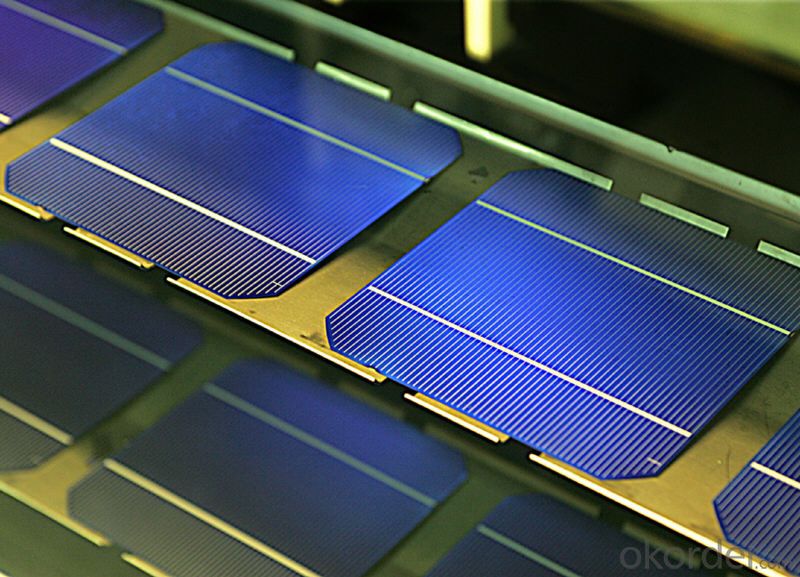
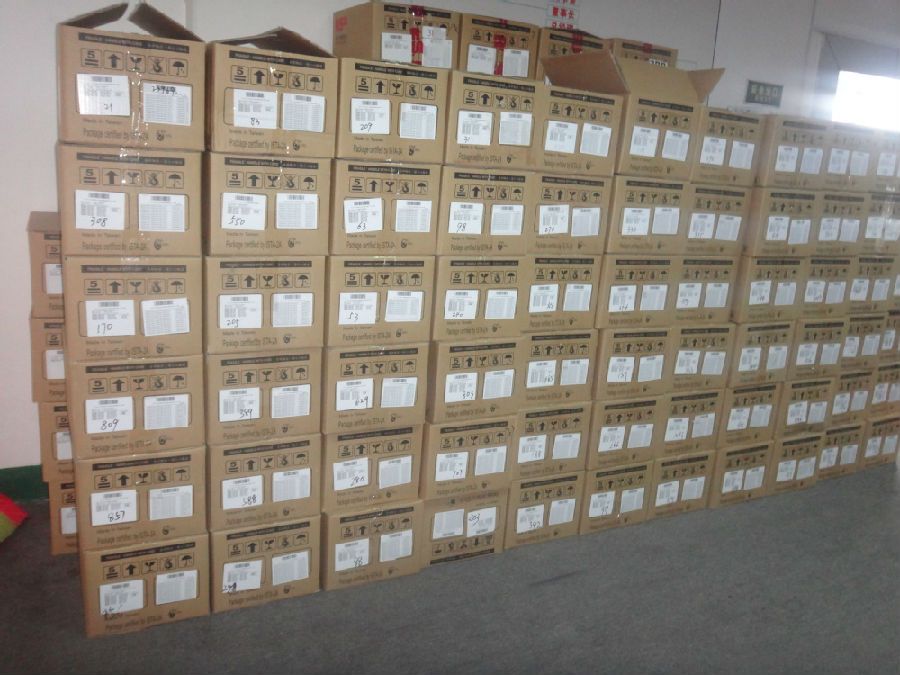
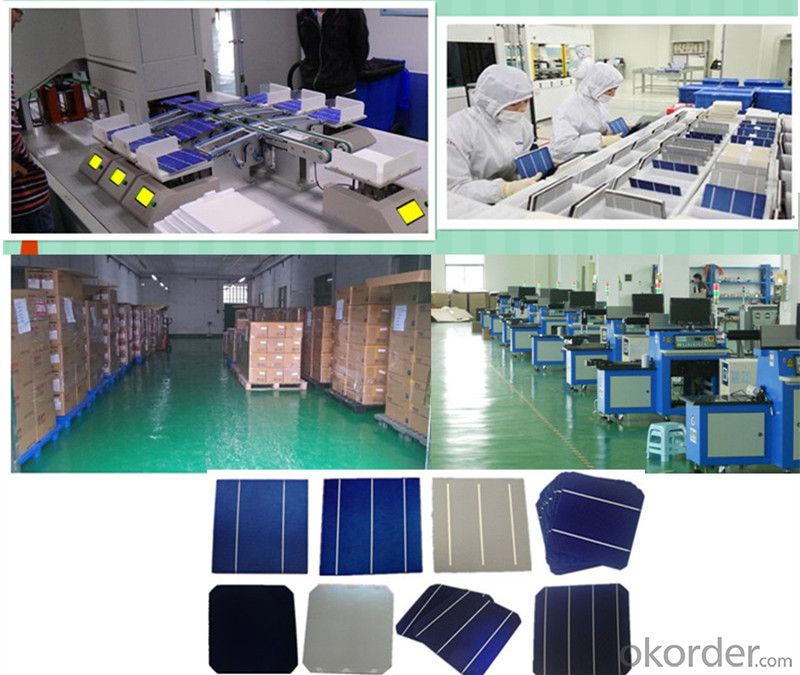
FAQ:
1. Q: Do you have your own factory?
A: Yes, we have. Our factory located in Jiangsu
2. Q: How can I visit your factory?
A: Before you visit,please contact us.We will show you the route or arrange a car to pick you up.
3. Q: Do you provide free sample?
A: Commenly we provide paid sample.
4. Q: Could you print our company LOGO on the nameplate and package?
A: Yes, we accept it.And need an Authorization Letter from you.
5. Q: Do you accept custom design on size?
A: Yes, if the size is reasonable.
6. Q: How can I be your agent in my country?
A: Please leave feedback. It's better for us to talk about details by email.
7. Q: Do you have solar project engineer who can guide me to install system?
A: Yes, we have a professional engineer team. They can teach you how to install a solar system.
- Q: How do solar silicon wafers perform in coastal salty air environments?
- Solar silicon wafers generally perform well in coastal salty air environments due to their high corrosion resistance. However, continuous exposure to salt-laden air may slightly reduce their efficiency over time. Regular maintenance and cleaning can help mitigate any potential performance degradation.
- Q: How to detect the surface finish of photovoltaic silicon wafers, what equipment?
- Physical examination of the surface roughness on the line, whether it can be cleaned with chemical or optical
- Q: What are the potential future advancements in solar silicon wafer technology?
- There are several potential future advancements in solar silicon wafer technology. One possibility is the development of thinner wafers, which would reduce material costs and improve the efficiency of solar panels. Another advancement could be the use of higher-quality silicon materials, such as monocrystalline silicon, to enhance the performance of solar cells. Additionally, there is ongoing research in improving the manufacturing processes of silicon wafers, such as the use of advanced deposition techniques or the introduction of new materials, which could further enhance the efficiency and durability of solar panels.
- Q: How to convert photovoltaic silicon MW
- 1MW=100 myriabit125*125 film general single chip 2.3W--2.8W156*156 film general single chip 3.6W-4.2WSilicon chip number =100W divided by Monolithic Power
- Q: How is the purity of a solar silicon wafer measured?
- The purity of a solar silicon wafer is typically measured by evaluating its resistivity. High-purity silicon wafers have lower resistivity levels, indicating fewer impurities present in the material. This measurement is crucial as impurities can negatively impact the efficiency and performance of solar cells.
- Q: What is the price of monocrystalline silicon
- On a large grain of silicon, 160 thousand transistors can be integrated. What a fine project! This is the crystallization of multidisciplinary collaborative efforts, is another milestone in the progress of science and technology.
- Q: What is the role of solar silicon wafers in reducing air pollution?
- Solar silicon wafers play a crucial role in reducing air pollution by serving as the key component in solar panels, which generate clean and renewable energy. By harnessing sunlight and converting it into electricity, solar panels powered by silicon wafers eliminate the need for fossil fuel-based power generation, thereby reducing harmful emissions that contribute to air pollution.
- Q: What is the role of front surface texturing on solar silicon wafers?
- The role of front surface texturing on solar silicon wafers is to enhance light absorption and reduce reflection. This texturing process creates tiny indentations or bumps on the wafer's surface, which helps to scatter light and increase the chances of it being absorbed by the solar cells. By reducing reflection, more sunlight can be utilized for electricity generation, thus improving the overall efficiency of the solar panel.
- Q: What are the advantages of using solar silicon wafers?
- There are several advantages of using solar silicon wafers. Firstly, silicon is abundant and easily available, making it a cost-effective material for solar panels. Secondly, silicon wafers have high efficiency in converting sunlight into electricity, ensuring maximum energy production. Additionally, silicon wafers have a long lifespan and require minimal maintenance, resulting in reduced operating costs. Furthermore, solar silicon wafers are environmentally friendly as they produce clean energy without any harmful emissions. Lastly, silicon-based solar panels are versatile and can be used in various applications, making them a popular choice for both residential and commercial use.
- Q: How does surface roughness affect the efficiency of a solar silicon wafer?
- Surface roughness affects the efficiency of a solar silicon wafer by influencing the amount of light that is absorbed and reflected. A smoother surface allows for more light to be absorbed into the wafer, increasing its efficiency. Conversely, a rougher surface scatters and reflects more light, reducing the overall efficiency of the solar cell.
Send your message to us
Solar Grade Silicon Wafer - Mono Solar Cells 156mm*156mm in Bulk Quantity Low Price Stock 19.4
- Loading Port:
- Shanghai
- Payment Terms:
- TT OR LC
- Min Order Qty:
- 1000 pc
- Supply Capability:
- 100000 pc/month
OKorder Service Pledge
OKorder Financial Service
Similar products
Hot products
Hot Searches
Related keywords
